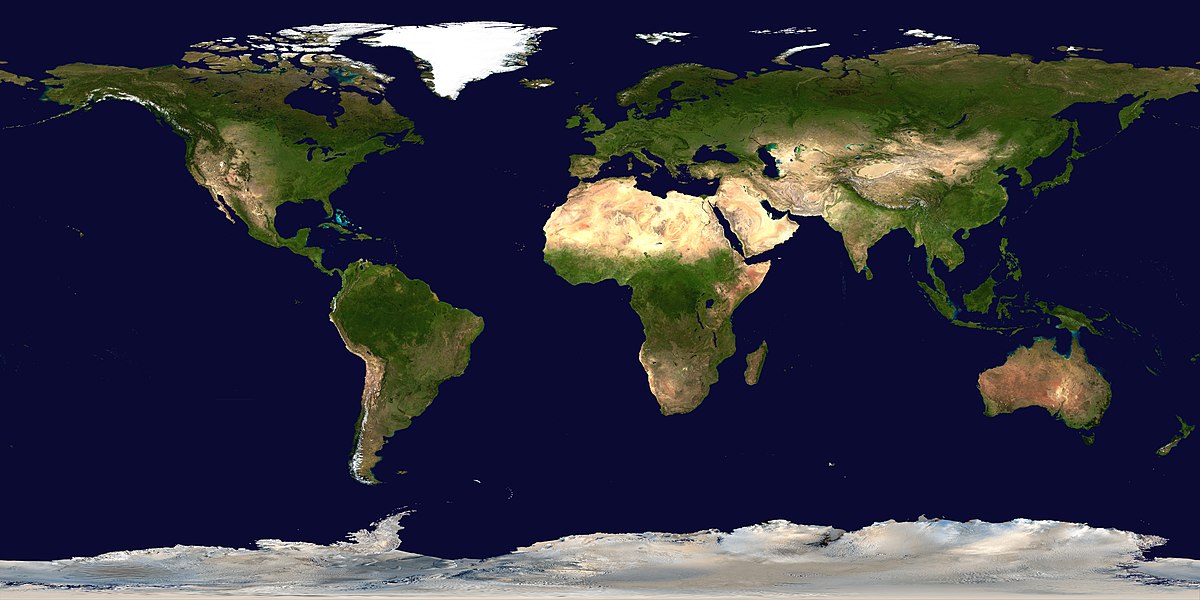Peristiwa Meteor Ordovisium
Peristiwa Meteor Ordovisium adalah peningkatan drastis pada tingkat keseringan tumbukan meteor tipe L chondrite yang terjadi pada kala Ordovisium Tengah, 467.5 juta tahun lalu.[1][2] Para ilmuwan mengetahui ini dari banyaknya sisa-sisa dari meteor tipe ini, di salahsatu tambang di Swedia, dan meningginya konsentrasi butiran kromit kondritik di batuan sedimen yang berasal dari saat itu.[1][3][4][5][6] Peningkatan sementara ini diperkirakan disebabkan oleh terpecahnya sebuah benda antariksa tipe L kondrit pada 468 ± 0.3 juta tahun lalu, yang dimana serpihan-serpihannya memasuki orbit Bumi.[7] Para ilmuwan berspekulasi, meski masih dipertanyakan, bahwa peristiwa singkat ini berkontribusi kepada, atau bahkan memulai Peristiwa Biodiversifikasi Besar Ordovisium.[1][2][7][8]
Kawah yang kemungkinan dihasilkan
[sunting | sunting sumber]Referensi
[sunting | sunting sumber]- ^ a b c Korochantseva, Ekaterina; Trieloff, Mario; Lorenz, Cyrill; Buykin, Alexey; Ivanova, Marina; Schwarz, Winfried; Hopp, Jens; Jessberger, Elmar (2007). "L-chondrite asteroid breakup tied to Ordovician meteorite shower by multiple isochron 40 Ar- 39 Ar dating". Meteoritics & Planetary Science. 42 (1): 113–130. Bibcode:2007M&PS...42..113K. doi:10.1111/j.1945-5100.2007.tb00221.x.
- ^ a b Lindskog, A.; Costa, M. M.; Rasmussen, C.M.Ø.; Connelly, J. N.; Eriksson, M. E. (2017-01-24). "Refined Ordovician timescale reveals no link between asteroid breakup and biodiversification". Nature Communications (dalam bahasa Inggris). 8: 14066. doi:10.1038/ncomms14066. ISSN 2041-1723. PMC 5286199
 . PMID 28117834.
. PMID 28117834. It has been suggested that the Middle Ordovician meteorite bombardment played a crucial role in the Great Ordovician Biodiversification Event, but this study shows that the two phenomena were unrelated
- ^ H. Haack et al. Meteorite, asteroidal, and theoretical constraints on the 500-Ma disruption of the L chondrite parent body, Icarus, Vol. 119, p. 182 (1996).
- ^ Heck, Philipp; Birger Schmitz; Heinrich Baur; Alex N. Halliday; Rainer Wieler (15 July 2004). "Fast delivery of meteorites to Earth after a major asteroid collision". Nature. 430 (6997): 323–325. Bibcode:2004Natur.430..323H. doi:10.1038/nature02736. PMID 15254530.
- ^ LINDSKOG, Anders; SCHMITZ, Birger; CRONHOLM, Anders; DRONOV, Andrei (2012-07-30). "A Russian record of a Middle Ordovician meteorite shower: Extraterrestrial chromite at Lynna River, St. Petersburg region". Meteoritics & Planetary Science (dalam bahasa Inggris). 47 (8): 1274–1290. doi:10.1111/j.1945-5100.2012.01383.x. ISSN 1086-9379.
- ^ Cronholm, Anders; Schmitz, Birger (2010-07-01). "Extraterrestrial chromite distribution across the mid-Ordovician Puxi River section, central China: Evidence for a global major spike in flux of L-chondritic matter". Icarus (dalam bahasa Inggris). 208 (1): 36–48. doi:10.1016/j.icarus.2010.02.004. ISSN 0019-1035.
- ^ a b Schmitz, Birger; Harper, David; et al. (16 December 2007). "Asteroid breakup linked to the Great Ordovician Biodiversification Event" (PDF). Nature Geoscience. 1: 49–53. doi:10.1038/ngeo.2007.37. hdl:1912/2272
 .
.
- ^ An extraterrestrial trigger for the mid-Ordovician ice age: Dust from the breakup of the L-chondrite parent body, Birger Schmitz et al, AAAS Science Advances, 18 Sep 2019: Vol. 5, no. 9, eaax4184; DOI: 10.1126/sciadv.aax4184, accessed 2019-10-09
